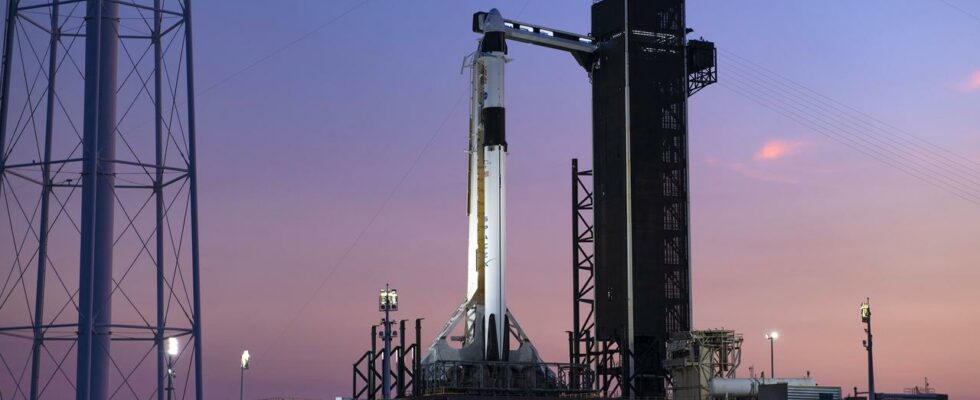Everything was ready, the astronauts were harnessed into their capsule, and the rocket ready to roar. But 2 minutes from takeoff, equipment linked to the ignition of the engines prevents the launch of the Crew-6 mission. This remains a fairly rare case, so what happens before the next robbery attempt?
The long training with the procedures comes into play.
Crew-6, not for today
It’s a radio message to all the teams, which must have generated a sigh of disappointment from Stephen Bowen, Warren Hoburg, Andrey Fedyaev and Sultan Al-Neyadi, inside their Crew Dragon Endeavor capsule. The famous “Hold Hold Hold” is indeed a message that immediately stops the countdown, and in the case of a mission like Crew-6 whose takeoff must be precise to the second, implies that the attempted flight will not will not take place. This is what happened this morning of February 27 at 7:43 a.m., 2 minutes and 14 seconds before the planned ignition of the Falcon 9 engines, following a technical problem: the values of the sensors did not allow the teams to be certain that the levels of the TEA-TEB mixture (which is used to ignite rocket engines) were as expected. This presents a risk of unstable or partial ignition, and it is a blocking condition, flight cancellation is a matter of safety. “Hold Hold Hold” is a radio message that is broadcast simultaneously to astronauts, ground crews, NASA in Houston and the SpaceX control center in Hawthorne, California.
Remain seated and keep your seat belts
It is then a question of ensuring the safety of the material, but especially of the four astronauts present on board: they are always seated on several enormous tanks of propellant, filled and cooled. For about 40 minutes, they sit in their seats, paying close attention to their movements, because if the on-board computer or the ground crews detect a significant problem, the emergency ejection system is always armed and ready. to embark Crew Dragon in a breathtaking little flight, with a big acceleration to take it away from the launch site. It is therefore a question of keeping the helmets closed, the feet on the toe clips, the communications open, and this until the two stages of Falcon 9 are purged, and the propellant supply lines are, they too, empty.
Everyone starts again on Thursday
The emergency system is then disarmed, and the teams from the Kennedy Space Center take over the vehicles that will take them to the launch site (10 minutes’ drive). The removable crew access arm is placed next to the capsule, within which occupants were able to remove their helmets and gloves. Then just open the hatch and bring everyone back to the ground via the elevator, then bring the suits and equipment back to the astronaut preparation center. An inventory is carried out during the day, while other teams deal with the problem on the rocket. In the event of a major problem, the latter can also be tilted horizontally and transferred to its hangar in less than half a day.
In theory, to reach the ISS, several firing windows follow one another in this way, every 24 or 48 hours. Another opens on February 28, but the weather in Florida (but also offshore in the Atlantic Ocean, where the capsule must be able to land in the event of a problem during the flight) is deteriorating. SpaceX and NASA have therefore decided that the next attempt for Crew-6 will take place this Thursday, March 2 at 6:34 a.m. (Paris). With this time for the crew, a trip to the ISS rather than to the Kennedy Space Center…
Source : Arstechnica

1